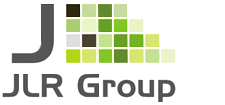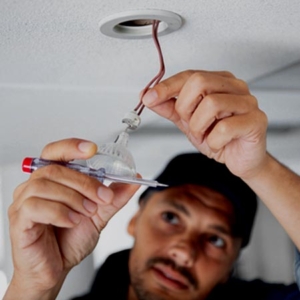 https://jlr-group.com/wp-content/uploads/2025/06/building-energy-savings.png
185
260
admin
https://jlr-group.com/wp-content/uploads/2024/04/ml-jlr-construction.png
admin2025-06-15 21:05:542025-06-26 02:29:05Hidden Savings: How to Reduce Energy Costs in Michigan Buildings
https://jlr-group.com/wp-content/uploads/2025/06/building-energy-savings.png
185
260
admin
https://jlr-group.com/wp-content/uploads/2024/04/ml-jlr-construction.png
admin2025-06-15 21:05:542025-06-26 02:29:05Hidden Savings: How to Reduce Energy Costs in Michigan Buildings7 Considerations for Warehouse & High Bay Lighting Installation
Proper illumination represents a critical operational factor for warehouses, manufacturing facilities, and other large industrial spaces. Beyond simply providing visibility, well-designed lighting systems in these environments directly impact worker safety, operational efficiency, product quality, and energy costs. Despite its importance, high bay lighting often receives insufficient attention during facility planning and renovation projects, leading to suboptimal performance, excessive energy consumption, and unnecessary maintenance challenges that affect bottom-line results.
The unique characteristics of large industrial spaces—high ceilings, expansive floor areas, specialized work zones, and varying visibility requirements—demand lighting solutions specifically engineered for these environments. Standard commercial lighting approaches that might work effectively in office or retail settings frequently prove inadequate when applied to warehouse and manufacturing facilities, creating uneven illumination, problematic shadows, excessive glare, and operational inefficiencies that impact productivity and safety.
In this article, the commercial contractors at JLR Group outline seven essential considerations for warehouse and high bay lighting installation. Understanding these key factors will help facility managers, business owners, and project planners make informed decisions that optimize illumination quality while managing installation and operational costs effectively for industrial spaces throughout the Flint, MI region.
Warehouse & High Bay Lighting Ceiling Height
Ceiling height represents the most fundamental consideration for high bay lighting design, directly influencing fixture selection, light distribution patterns, and mounting configurations. High bay lighting solutions are specifically engineered for spaces with ceilings ranging from 20 to 45 feet or more—heights commonly found in warehouses, manufacturing facilities, distribution centers, and similar industrial environments. The vertical distance between fixtures and work surfaces creates significant design challenges that require specialized approaches to ensure proper illumination throughout the space.
As ceiling height increases, light must travel greater distances before reaching work surfaces, creating inherent challenges for maintaining adequate brightness and uniformity. Higher mounting positions require fixtures with greater lumen output and specialized optics that direct light efficiently toward the intended areas without excessive diffusion or light loss. Industry guidelines typically recommend specific lumen packages based on ceiling height ranges—starting around 10,000-15,000 lumens for lower high bay applications (20-25 feet) and increasing to 60,000+ lumens for extreme heights exceeding 45 feet.
Beyond initial brightness requirements, ceiling height significantly impacts maintenance accessibility, cleaning schedules, and future modification capabilities. JLR Group has implemented customized high bay lighting solutions for numerous warehouses and manufacturing facilities throughout Flint, MI, creating height-appropriate systems that deliver optimal illumination while considering the practical realities of maintaining fixtures in challenging overhead environments.
Warehouse & High Bay Lighting Mounting
Mounting configuration significantly impacts both lighting performance and installation requirements for high bay systems. The primary mounting options include pendant mounting (suspended from ceiling structures via cables or rods), direct mounting (attached directly to ceiling surfaces), and surface mounting (installed on walls or other vertical surfaces for specialized applications). Each approach offers distinct advantages for different facility types and structural configurations, with important implications for both light distribution and maintenance accessibility.
Pendant mounting provides significant flexibility for optimizing fixture height independent of ceiling structure, allowing precise positioning to achieve desired light levels and distribution patterns. This approach proves particularly valuable in facilities with extremely high ceilings, where lowering fixtures closer to work areas can dramatically improve illumination efficiency and reduce required fixture quantities. However, pendant installations require consideration of potential vibration, air movement effects, and structural attachment points to ensure long-term stability and safety.
Direct mounting typically offers the most economical installation approach with minimized materials and labor, but limits flexibility for height adjustment and may create challenges for maintenance access depending on ceiling conditions. The structural integrity of mounting surfaces requires careful assessment, particularly when retrofitting older facilities or installing heavier conventional fixtures. JLR Group has executed successful high bay mounting solutions across diverse industrial environments throughout Flint, MI, adapting approaches to each facility’s specific structural characteristics while optimizing both installation efficiency and long-term performance.
Warehouse & High Bay Lighting Spacing
Proper fixture spacing represents a critical calculation for high bay installations, directly impacting illumination uniformity, energy efficiency, and visual comfort throughout industrial spaces. Insufficient spacing creates costly overlighting with excessive energy consumption and potential glare issues, while excessive spacing produces inadequate light levels and problematic dark zones between fixtures. Professional lighting design considers multiple factors to determine optimal spacing, including fixture output, mounting height, reflectance values of surrounding surfaces, and specific tasks performed in different facility zones.
The industry standard measurement for determining appropriate fixture spacing is the spacing criterion (SC), which represents the maximum recommended distance between fixtures as a ratio of mounting height. Most high bay applications target a spacing-to-height ratio between A 0.5 and 1.5, depending on desired uniformity, ceiling height, and fixture distribution characteristics. This calculation ensures proper overlap between light distribution patterns from adjacent fixtures, eliminating dark spots while preventing wasteful overlighting.
For large warehouses and manufacturing facilities with varying ceiling heights or mezzanine levels, spacing calculations must adapt to changing conditions throughout the space, often requiring multiple fixture types or customized mounting heights in different zones. JLR Group has designed and implemented precisely calculated spacing plans for numerous industrial facilities across Flint, MI, creating optimized illumination patterns that eliminate dark zones and ensure consistent light levels throughout large warehouse and manufacturing environments.
Light Distribution
Light distribution patterns critically impact visibility, task performance, and safety in warehouse environments, with different distribution types serving specific operational needs. The primary distribution patterns for high bay lighting include narrow (30-45° beam angle), medium (45-60°), wide (60-90°), and very wide (90°+), each offering distinct advantages for different ceiling heights and work activities. Professional lighting design carefully matches these distribution characteristics to facility requirements, ensuring appropriate illumination for both horizontal and vertical surfaces throughout the space.
Vertical illumination deserves particular attention in warehouse environments where visibility of stocked shelving, equipment displays, and safety signage significantly impacts operational efficiency and accident prevention. While many lighting designs focus primarily on horizontal footcandle measurements at floor level, insufficient vertical illumination can create hazardous conditions for forklift operations, inventory management, and equipment maintenance. Specialized aisle lighting configurations with asymmetric distribution patterns often provide optimal solutions for warehouses with high racking systems, directing light vertically along shelf faces while minimizing wasted illumination.
Glare control represents another essential distribution consideration, particularly in facilities using digital displays, barcode scanning systems, or precision equipment. High-quality LED high bay fixtures incorporate specialized optics and diffusion technologies that minimize discomfort glare and veiling reflections while maintaining excellent visibility throughout the space. JLR Group has implemented customized distribution solutions for diverse warehouse and manufacturing operations throughout Flint, MI, creating tailored illumination patterns that address the specific visibility requirements of different industrial processes and storage configurations.
Warehouse & High Bay Lighting Types
While several lighting technologies have historically been used in high bay applications, modern installations overwhelmingly favor LED solutions due to their superior performance characteristics. Traditional high-intensity discharge (HID) options like metal halide and high-pressure sodium have largely been rendered obsolete by LED’s dramatic advantages in energy efficiency, lifespan, light quality, and control capabilities. For facilities still utilizing older technologies, conversion to LED represents one of the most impactful improvement opportunities available.
LED high bay fixtures outperform legacy technologies across virtually every performance metric. Compared to metal halide systems, modern LED solutions deliver 50-70% energy savings while providing superior light quality with color rendering index (CRI) values typically exceeding 80 (versus 65-70 for metal halide). The operational lifespan differential proves even more dramatic—quality LED high bays maintain 70% of their initial output for 100,000+ hours compared to just 10,000-20,000 hours for metal halide, which also experiences significant output degradation throughout its shorter life.
Beyond these fundamental advantages, LED technology eliminates many operational limitations of traditional systems, including warm-up periods (metal halide fixtures require 10-15 minutes to reach full brightness), restrike delays (hot metal halide lamps cannot immediately restart after power interruptions), and cycling issues (frequent switching dramatically shortens HID lamp life). JLR Group has completed numerous LED conversions for warehouse and manufacturing facilities throughout Flint, MI, helping businesses eliminate these operational constraints while dramatically reducing energy consumption and maintenance requirements through state-of-the-art LED high bay systems.
Warehouse & High Bay Lighting Energy Savings
Energy efficiency represents a primary consideration for warehouse lighting, as these large facilities typically operate lighting systems for extended hours across substantial square footage. The scale of these operations magnifies even small efficiency differences, making lighting technology selection particularly impactful for operational costs. Modern LED high bay systems deliver dramatic energy reductions compared to legacy technologies—typically 50-70% versus metal halide and 40-60% versus fluorescent systems—while providing superior illumination quality.
These efficiency advantages derive from both inherent LED efficacy (lumens produced per watt consumed) and the directional nature of LED light emission. While conventional technologies radiate light in all directions, requiring reflectors to redirect output toward intended surfaces (with significant losses), LED fixtures emit directional light precisely where needed without wasteful scatter. This fundamental difference enables LED systems to achieve higher delivered light levels with lower power consumption, dramatically improving overall system efficiency.
The financial impact of these efficiency improvements becomes particularly significant when considering Michigan’s industrial electricity rates and demand charges. For a typical 100,000 square foot warehouse in Flint operating lights 12 hours daily, upgrading from metal halide to LED high bay fixtures often reduces annual lighting electricity costs by $30,000-$50,000 while improving illumination quality throughout the facility. JLR Group has implemented energy-efficient lighting upgrades for numerous warehouse and industrial facilities throughout the Flint, MI area, consistently delivering verified energy reductions exceeding 60% while significantly enhancing workplace visibility and operational conditions.
Warehouse & High Bay Lighting Smart Controls
Advanced control systems represent the final essential consideration for modern warehouse lighting installations, offering capabilities that dramatically enhance both energy efficiency and operational flexibility. While traditional warehouse lighting typically operated as simple on/off zones, modern control technologies enable sophisticated management strategies including occupancy-based control, daylight harvesting, task tuning, and scheduled dimming—each contributing significant additional energy savings beyond the inherent efficiency of LED technology itself.
Occupancy-based controls prove particularly valuable in warehouse environments where space utilization varies throughout operational periods. By automatically reducing light levels in unoccupied aisles or zones, these systems can generate additional 30-50% energy savings beyond the LED fixture efficiency. Advanced sensor technologies including passive infrared, ultrasonic, and microwave detection ensure reliable operation in challenging warehouse environments, with specialized capabilities for detecting forklift movement in high-racking areas where traditional sensors might have limited effectiveness.
For facilities with significant natural light through skylights or clerestory windows, daylight harvesting sensors automatically adjust artificial lighting to maintain consistent illumination levels while minimizing unnecessary energy usage during daylight hours. When integrated with networked control systems, these technologies provide comprehensive energy management capabilities while generating valuable utilization data for ongoing operational optimization. JLR Group has implemented numerous intelligent lighting control systems for warehouse and industrial clients throughout Flint, MI, helping businesses maximize energy savings through strategic application of these advanced control technologies.
Warehouse Lighting Installation | Flint, MI
Effective high bay lighting design requires careful consideration of multiple interrelated factors to achieve optimal results for industrial environments. From fundamental considerations of ceiling height and mounting configuration to sophisticated decisions regarding fixture selection, distribution patterns, and control strategies, each element contributes to creating safe, efficient, and productive illumination for warehouse and manufacturing operations.
The commercial contractors at JLR Group bring extensive experience in industrial lighting design and installation to every project, ensuring Flint businesses receive optimized high bay lighting solutions that address their specific operational requirements. Our comprehensive approach includes detailed facility assessment, photometric analysis, energy modeling, rebate management, professional installation, and control system programming—delivering turnkey lighting solutions that enhance facility performance while minimizing energy consumption.
Contact JLR Group today to schedule a warehouse lighting assessment and discover how your Flint, MI facility can benefit from expertly designed high bay lighting systems. With Consumers Energy currently offering substantial incentives for industrial lighting upgrades, there’s never been a better time to transform your warehouse illumination into a strategic operational advantage.










